#the chinese theatre
Explore tagged Tumblr posts
Photo



The Great Movie Ride 🎬 🎥 📣 Disney’s Hollywood Studios
#And someday we'll look back and say it was fun#disney#walt disney#the chinese theatre#disney world#chinese#walt disney world#the great movie ride#disney hollywood studios#sunset blvd#walt disney world resort#florida
13 notes
·
View notes
Text
'Christopher Nolan's Oppenheimer has been on a legendary box office run since its release on July 21, and a big factor in that is down to the movie's exceptional performance on IMAX, and in particular, the 70mm format which Nolan has been championing as both the gold standard of film and his own personal preference and recommendation for how audiences can best experience the three-hour epic about the making of the atomic bomb.
In terms of raw figures, the movie's achievements position it as the 8th highest-grossing IMAX release in history. This result also factors in the notable absence of markets such as China, Japan, South Korea, and Russia, where the film has not yet been showcased (and in some cases, may not be at all). The film's earnings from IMAX screenings alone have surged impressively to $114.2 million as of the beginning of this week. Presently, Oppenheimer holds the distinction of being the second film to surpass the $100 million mark at the IMAX box office in comparable markets.
However, Oppenheimer was also filmed in full frame IMAX 15 Perf 70mm Film, and there are only 30 theaters worldwide capable of playing the film in that format, alongside others that are capable of showing the film in standard 70mm. One such theatre which can display the film in 70mm is the TCL Chinese Theatre, the legendary cinema in the heart of Hollywood and Oppenheimer now has the distinction of being the highest-grossing film in the theatre's storied history.
On Wednesday, the film had passed the threshold and grossed a total $1.53 million since release, beating the previous record of $1.51 million which was set by Star Wars: The Force Awakens in 2015. Star Wars took 15 weeks to reach this total, while Oppenheiner took only 3 weeks. Oppenheimer has been extended at the TCL Chinese Theatre in IMAX 70mm film through the end of August. "It's been a historic run for us at the TCL Chinese with weeks of sold-out shows. We've added 6am shows for the last four weekends to satisfy audience demand," says Brett Fellman, executive with the TCL Chinese Theatres.
Why Is the Chinese Theatre So Sacred?
The Chinese Theatre, officially known as TCL Chinese Theatre, is a historic movie palace located on Hollywood Boulevard in Los Angeles, California. It has played a significant role in the history of cinema and is renowned for its iconic forecourt featuring celebrity handprints, footprints, and signatures in the concrete. The Chinese Theatre stands as a symbol of Hollywood's golden age and the entertainment industry's cultural impact.
The theatre's grand opening in 1927 featured the premiere of Cecil B. DeMille's silent film The King of Kings. The event marked the beginning of the Chinese Theatre's legacy as a venue for high-profile film premieres and events. A few weeks after the opening, actress Norma Talmadge accidentally stepped into wet cement while visiting the theatre, which was the launching point for the tradition of celebrities leaving a signature in the forecourt. In 2013, the Chinese electronics company TCL secured the naming rights for the theatre, and installed an IMAX auditorium, leading to Oppenheimer taking its place in the grand history of the iconic theatre.'
#The Chinese Theatre#Hollywood Boulevard#IMAX#Oppenheimer#The King of Kings#Cecil B. DeMille#Star Wars: The Force Awakens#Christopher Nolan
0 notes
Text

Promotional Ticket Booth For King Kong
Grauman's Chinese Theatre (1933)
#Film#King Kong#Grauman's Chinese Theatre#Photography#Gorillas#Vintage#Art#Horror#Horror Films#Horror Movies#1933#1930s#30s
230 notes
·
View notes
Text
Main types of Chinese Opera pt. 1


There are many different types of chinese opera, so here are some of the main ones!
Peking Opera 京剧 (Jīngjù)
This is probably one of the most well-known operas, originating from Beijing during the Qing dynasty. There are 4 main roles:
1.生 (shēng), which is usually an older dignified male character such as a scholar, which can be divided into older, younger and martial 生 aka 武生 (wǔshēng)
2. 旦 (dàn), a female role which was previously played by men as women were not allowed to perform during the Qing dynasty, but nowadays both men and women can play this role. This role has several subtypes:
闺门旦 (guīméndàn), a young unmarried high-status virtuous woman, whose main focus is singing.
正旦 (Zhèngdàn)/青衣 (Qīngyī), an elegant, middle-aged, usually married woman who mainly sings.
花旦 (Huādàn), a young woman who unlike the Guīméndàn focuses on speech and movement.
武旦 (Wǔdàn), this is a martial arts role with quite a lot of stunts and fighting with rare singing moments
刀马旦 (Dāomǎdàn), a young brave warrior, who usually focuses on acrobatics, singing and dancing unlike the Wǔdàn.
老旦 (Lǎodàn), is an older female role, usually with a lower singing voice.
彩旦 (Cǎi dàn), is more of a clown role, which is apparently more commonly performed by men
4. 净 (Jìng), a "rough man" role, usually has a vibrant and strong character, which has heavy face painting.
5. 丑 (chǒu), the clown role, which is one of the most physically demanding roles due to the acting and acrobatics combo, despite being considered as a minor role.
There are over 1400 stories used in Peking Opera, with 2 traditional types, civil and martial. Civil focuses on the relationship between the characters and is usually about normal daily occurrences, whereas martial is more about action and fighting. Another more modern type of differentiation divides the plays into traditional (pre-1949ish), plays created after 1949, and contemporary plays.


Kunqu Opera 昆曲 (kūnqǔ)
This is one of the oldest types of Chinese opera, originating from Kunshan, combining signing, dancing and martial arts. It features similar characters like the Peking Opera with another character 末 (Mò), who is an old man with a long beard.
However, there are some differences, as Kunqu uses softer, melodic music and different instruments such as the flute as the main accompanying instrument rather than Peking Opera's stringed instruments. The types of stories are also different, as Kunqu's focus more on the romantic and poetic aspect, exploring various classical stories. Peking Opera's stories tend to be a bit more varied as previously mentioned.
Traditionally, Kunqu was mostly for the upper-class as the stories performed were classical Chinese literature, and at the time not everyone had the opportunity to learn. This may be why Kunqu typically uses classic chinese, whereas Peking uses a combination of both classic and vernacular, making it more available for everyone.


Yue Opera 越剧 (yuèjù)
This opera is also known as Shaoxing opera, originating from Shaoxing, Zhejiang in early 1900s. Originally the performances featured only male actors but nowadays all-female performance troupes are becoming the standard. It's interestingly the 2nd most loved opera type, just after Peking Opera as it's slow and romantic form is perfect for love stories such as The Butterfly Lovers.
Yue Opera also features the usual set of character types e.g. 生,旦 etc. except they are usually played by women.
In terms of appearance, Yue Opera tends to go for a more subtle makeup look (as subtle as stage makeup can be) and simpler but nonetheless gorgeous costumes, in contrast to Peking Opera's dramatic and bursting colors.
Yue Opera usually relies on string instruments, with a smaller musical ensemble and musical accompaniment so that the performers singing is more clear unlike Peking Opera's stronger background music.


#chinese opera#theatre#越剧#昆曲#京剧#peking opera#peking#china#chinese culture#chinese#китай#中国文化#中国#new interest unlocked#slavic roots western mind#opera#kunqu#yueju#yue opera#music
338 notes
·
View notes
Text




I think I posted this before, but that was no doubt 4,000 posts ago. So here you go again.
It might be hard to believe but the car used at the beginning of 'The Pink Panther Show' cartoon series was actually the real thing. If you cast your mind back, the sequence involved the car pulling up at Grauman's Chinese Theatre in and the film then cuts to the animated scenes.
The car was built in 1969 and was based on an Oldsmobile Toronado complete with 7 litre engine. It was pink of course with pink furry interior which also contained a bar and a mobile phone.
I'm pretty certain the Pink Panther wasn't real though. Award yourself 5 bonus points if you can still hum the theme tune.
#oldsmobile toronado#oldsmobile#Toronado#car#cars#pink panther#the pink panther#Grauman's Chinese Theatre#hollywood
123 notes
·
View notes
Text






Shirley MacLaine and Jack Lemmon celebrate with champagne after immortalizing their prints at Grauman’s Chinese Theatre in June 1963.
130 notes
·
View notes
Text

#nsync#trolls#brozone#trolls band together#dream works#animation movies#premiere#trolls movie#november#2023#jc chasez#chris kirkpatrick#joey fatone#lance bass#justin timberlake#*nsync#tcl chinese theatre#los angeles#california#hollywood#jtimberlake#jt#timberlake
294 notes
·
View notes
Text
Triple Date: Hualian, Fengqing and Quanyin.
They attend a Chinese Opera.
XL and MQ are watching enraptured, completely obsessed with the story being told, the music, the performance, all of it!
HC hasn't noticed the performance at all, he's watching XL's face.
FX doesn't really care that much. Also:
FX: *sees some impressive acrobatics* "I could do that"
XL, MQ and HC, in unison: "no you couldn't"
QYZ keeps trying to run off because he's bored. YY likes Opera but he is too focused on keeping QYZ in his seat. He misses most of the performance (XL later buys him a solo ticket, with HC's money obviously, so he can see one on his own). QYZ eventually settles down when YY holds his hand. QYZ, despite his boredom, is happy to be out in public with Shixiong!
#tgcf#tian guan ci fu#heaven official's blessing#hualian#fengqing#quanyin#hua cheng#xie lian#feng xin#mu qing#quan yizhen#yin yu#idk what traditional Chinese theatre culture is like#like is it traditional to eat snacks or whatever?#if it is#hc absolutely sends YY and QYZ to get food#QYZ insists on paying for Shixiong#YY is having a hard time but at least he's enjoying the music#XL and FX used to attend the theatre all the time back in Xianle#XL has always loved it#FX just accepts it
127 notes
·
View notes
Text


Domhnall Gleeson at 'The Revenant' World Premiere in Hollywood, CA
📸 Sthanlee B. Mirador (16.12.2015)
37 notes
·
View notes
Note
Hello! Sorry to bother you.
I noticed you are in JTTW fandom and wanted to ask if you know where can I find more info on Sun Wukong's make up and stage performance? I tried to find stuff on my own but quickly realised that I'm just one small weak goblin. I saw some blogs about chinese opera behind the scenes with SW images and couple of videos but that's about it... and since you look like you are way more knowledgeable I came here to beg a favour.
Do you know any videos, documentaries or blogs on this topic?
Thank you for your time ♥♥♥
Hi!
TLDR: Bold text are writings/videos linked to Peking Opera Culture and specifics surrounding Monkey King performances. Post has a mid-length summary of key aspects of his Peking appearances and core thematics. This mainly goes along visual design analysis, as I don’t focus in performance art as much! Read more divide for courtesy
(Also taking a moment to highly praise @/bonesmarinated ‘s Peking opera Wukong pieces!)
The Monkey King/Sun Wukong is a very well covered and well performed character in Peking Opera, I’ll give a short(ish) summary of the key aspect of his design across various performances based on work I can recall from my Undergrad as well as my own experience- and i’ll link any documents/websites/images I have on hand
Wukong’s Lian Pu falls under what is known the Jing role (complex hero) with similar facial decoration also being delegated to the Chou roles in Opera as well.
The dominant school of art in depicting him either on live performers or maskwear, have a fairly universal foundation for his appearance.

The oldest forms of Peking opera stick to Wuseguan (Five Colour Theory) with his Lian Pu sticking to a core 3 of White (Cunning), Red (Bravery), and Black (Loyalty). Even with Modernisation of the Peking Opera and developments in the science behind art and makeup, Lianpu is specific in its purpose of portraying the nature of a character beyond body language and aiding in accessibility for people at the far end of the audience.
The Monkey King’s Lian Pu is reflective of his mischievous and bold nature, combining it with the shape of an Old World Monkey’s furless face shape so that even those “uneducated” in Peking Opera culture can at least see /what/ Wukong is before they see /who/ he is. The White and red placement are linked to yin-yang dynamics relating to the stone he was born from and the energy it cultivated) as well as general themes beyond the tale itself.
Zheng’s “Evolution, Symbolism, and Artistry: A Study on the Colors of Peking Opera Facial Makeup” Discusses this in more detail. ( DOI: 10.23977/artpl.2023.041207) (ISSN 2523-5877)
(General Mask colours in Peking Opera, separate from Lian Pu: The Cultural Connotation and Symbolic Meaning of Chinese Opera Mask Color - Hanbing Tu)
In more modern designs, the key foundation of Wukong’s face doesn’t change much, however some variations do add colour to Wukong’s eyelids- mainly pink or yellow/gold. Both of these relate physically to the ‘whites’ of Old World Monkey’s eyes, with the yellow face paint being representative of “barbarism” or “savagery”. Gold is used on the faces of various immortal creatures from all backgrounds as Silver is.


(Left: Chu Luhao as Monkey King, stedling divine peaches and wine in celestial realm, Kaohsiung ) (Right: Monkey King Wukong in Beijing Opera Journey to the West at Liyuan Theater)
As with Taiwans branch off in culture, This Lian Pu on the left shows the eyebrows as the top of the eyelid makeup, contrast to Chinese style and other Sino-influenced regions. This works in Chu Luhao’s production as it plays towards the character Wukong is before he’s sealed under the mountain and begun the journey- hence more “wide eyed”.
Mentioning Yellow within the Wuseguan, this is why most of his earlier outfits have such a heavy bias towards yellow cloth, barbarism being represented across his whole body (his form, as a monkey over his soul that achieves enlightenment) with costumes later down his hero’s journey adding more black, blue (simplicity).



(Left: Performer playing Monkey in Journey to the West, Chinese Opera performance in Singapore) (Middle: Chu Luhao’s production, Sun Wukong arrives at the Dragon Palace of the East Sea) (Right: CANTON, CHINA – CIRCA JULY 2019: Beijing Opera performance of “Monkey King Making Havoc in Heaven”)
Key Read -> The Artistic Symbolism of the Painted Faces in Chinese Opera: An Introduction, David Ming-Yüeh Liang. https://www.jstor.org/stable/43560653
Book -> Chinese opera: Images and stories, Peter Lovrick, Wang-Ngai Siu
Book -> Drama kings: Players and publics in the re-creation of Peking opera, 1870-1937, Joshua Goldstein. https://books.google.co.uk/books?hl=en&lr=&id=XT_1fZ9Jp18C&oi=fnd&pg=PP1&dq=info:49R3XREYwVoJ:scholar.google.com/&ots=3OF1F4SILK&sig=gQyW7bGJzgnxG62Y2TxU01ZPazQ&redir_esc=y#v=onepage&q&f=false
This analytical paper on Monkey King: Hero is Back showcases modern animated links to Peking Monkey King designs - https://fslmjournals.taylors.edu.my/wp-content/uploads/SEARCH/SEARCH-2024-16-1/SEARCH-2024-P5-16-1.pdf
A blog site I found interesting was an interview with Yao Yudong, the successor to colourful Peking Opera masks, where he discusses creating the mask designs (with a Wukong mask as a recorded example) and a more in-depth written post. He expresses the key two styles of Wukong’s red markings known as “Upside down Gourd” style, and the less complex “Upside down Peach” style attributed to a different art school. In which his mask is directly attributed to items that come into contact with his face.
Jiao Feng, Peking Opera Facial Makeup: The Art of Face Painting: http://www.chinatoday.com.cn/ctenglish/2018/ich/202001/t20200117_800190202.html
Connected is a video of an Opera performer who does his own Lian Pu, which depending on the time period could take up to two hours. Although this design is significantly more contemporary in the use of gold on white sections as markings like black paint. https://x.com/chinadaily/status/1365730927133958144?s=46&t=06bYiE12l6qVJUxPCBuvvQ
In regards to Wukong’s combat performances, he falls into the role of a Wusheng (武生), which is the strand of stage costume used in representation of his staple armour.

(Monkey King in Journey to the West Performance, Beijing Opera)
In this costume, Wukong’s Phoenix feather cap is mirrored by Lingzi (翎子) or Zhilling (雉翎), which likely play back and forth with influencing eachother as time progresses, due to Wukong’s theatrical personality being heightened by the Pheasant tails and their movements as actors play their roles. In his Wusheng roles, he is more likely to be adorned with gold eyelids to highlight his layered immortality and connect to the golden armour he wears. The trait of biting the pheasant tails as a theatrical act of frustration is seen across adaptations, most recently in Black Myth: Wukong’s Chapter 6 Animation.
This animation’s design seems to relay the Lingzi strongly due to the way the studio details the lowest connection points to the crown ornament.

As stated in Bond’s writings “BEIJING OPERA COSTUMES: THE VISUAL COMMUNICATION OF CHARACTER AND CULTURE”, Wukong’s in-game Suozi Set and various adaptations Dragon Palace armours split similarly to the Kao (Armour) on Peking stages, with the falling of the frantic drastically increasing the size of the actor and his silhouette.
Qing-era flags on the costumes of Wusheng were used to express social standing, gender, nature, and ranking. The image above showcasing them has them match the Kao pattern of the clothing, other flags often held zodiac patterns- with the monkey showcasing vain, egotistical, inventive and tricky individuals; and the peach included in a flag hinting towards immortality.

(Ching Dynasty Year of the Monkey Flag used in the Peking Opera) Zaricore Flag Collection: https://www.flagcollection.com/itemdetails.php?CollectionItem_ID=943
Due to the History of Lian Pu, and Wuseguan, despite modernisation of Opera arts vastly widening the colours and complexity of costumes; Wukong sticks to a key 5 colour scheme, with a emphasis on the original trio of red-white-black, and gold being reserved for Wusheng/Wuxiaosheng to showcase immortality and strength. The prevalence of Opera alongside fictional theatre means that the two constantly play off of eachother in mannerisms and influence, both at the time of JTTW’s writing to the 21st century. But as Opera is a physical performance, all aspects of Peking costume design is meant to make the emotional and psychological aspects of characters physical, to a large audience space needing to see facial expressions heightened and clarified by Lian Pu.
Read -> Cultural-based visual expression: emotional analysis of human face via Peking Opera Painted Faces (POPF)
#i hope that “’more’ button works bc this is so going to clog up everything otherwise#hope this helped! i mainly know written sources due to academia#however i find best learning written theory and watching recited peking is the best way to approach it#wukong is a fascinating one bc of how intertwined literature and theatre is in this context#sun wukong#journey to the west#jttw#wukong#peking opera#but just stick to the bold text to find written sources and academia#black myth wukong#son goku#chinese opera#also sorry if this is worded badly uni has kicked my ASS this week
50 notes
·
View notes
Photo

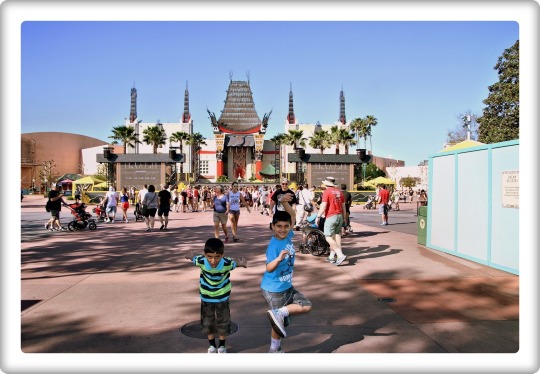
Disney’s Hollywood Studios 🎬 🎥 📣
#And someday we'll look back and say it was fun#disney#walt disney#disney hollywood studios#walt disney world#the great movie ride#the chinese theatre#disney world#sunset blvd#walt disney world resort#florida
2 notes
·
View notes
Text

P-40, China
@ron_eisele via X
52 notes
·
View notes
Text

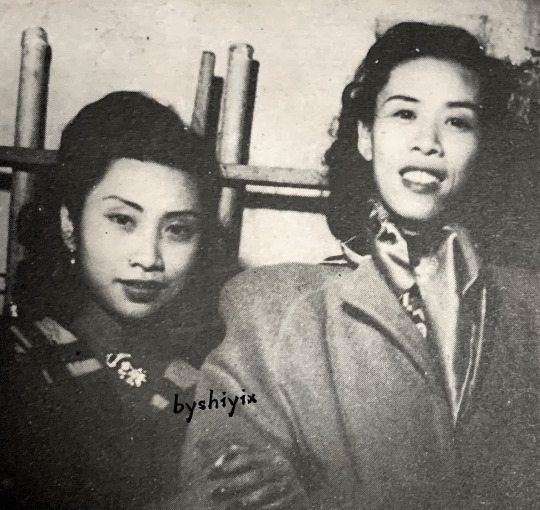
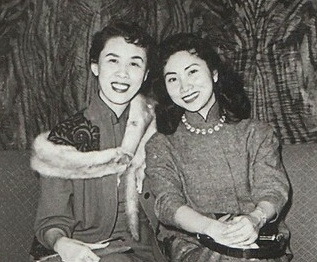
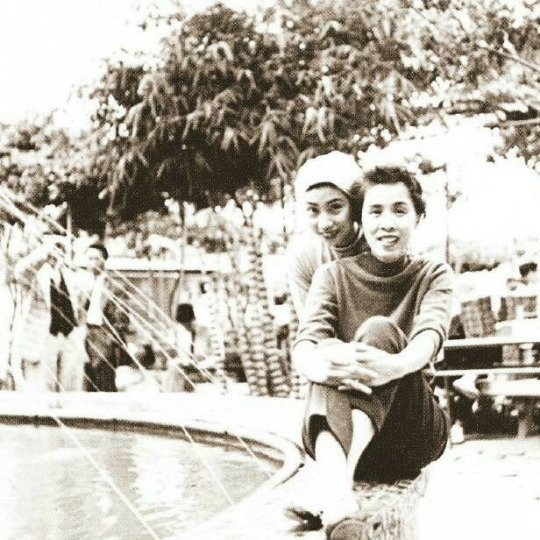

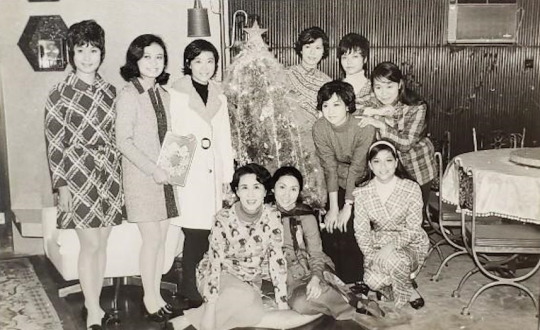


Female Queer Icons of Hong Kong // Yam Kim Fai (任劍輝) and Pak Suet Sin (白雪仙)
Photo 1: Promotional photo for 1955 contemporary movie The Model and the Car (玉女香車) (no video available) (Source: LCSD Museum Collection Search Portal)
Photo 4: Photo from Sin Fung Ming Opera Troupe's 1958 trip
Photo 5: Photo from a 1962 newspaper feature on Yam, Pak, and others at their (?) summer villa in Central, Hong Kong
Photo 6: Christmas celebrations with Yam, Pak, and their protégés of the Chor Fung Ming Troupe
Far and away the most iconic duo in Cantonese opera, Yam Kim Fai (任劍輝) and Pak Suet Sin (白雪仙) – commonly referred to simply as Yam-Pak (任白) – were famed for their partnership both on and off the stage… Click below to learn more!
Edit on 28/07/2023: Updated to link to a photo of the entrance to the Hong Kong Heritage Museum’s Pop Culture 60+ exhibit, and to add information regarding Yam and Pak's marriage status.
Iconic? How?
Yam-Pak are the face of Cantonese opera; you can't talk about the latter without mentioning the former. It's to the point where a gigantic picture of them graces the entrance to the Hong Kong Heritage Museum’s permanent exhibition on Hong Kong pop culture’s evolution across the past 60 years (“Hong Kong Pop 60+”) - they are the first thing you see upon entering!
Best known as the originators - with Yam playing the male leads and Pak the female leads - of five masterpieces of Cantonese opera, namely:
1. Princess Cheung Ping (帝女花) 2. The Legend of the Purple Hairpin (紫釵記) 3. The Dream Tryst in the Peony Pavilion (牡丹亭驚夢) 4. The Reincarnation of Lady Plum Blossom (再世紅梅記) 5. Butterfly and Red Pear Blossom (蝶影紅梨記) (Note: Princess Cheung Ping, Purple Hairpin, and Butterfly and Red Pear Blossom were made into abridged movie versions, with the Sin Fung Ming troupe members reprising their roles from the theatre productions. Also, the "Fragrant Sacrifice" (香夭) duet from Princess Cheung Ping (movie clip) is one of - if not the most - famous songs in Cantonese opera.)
Yam and Pak were the leading pair and co-founders of the legendary Sin Fung Ming Opera Troupe (仙鳳鳴劇團; 1956-1961), which is widely held to have pushed Cantonese opera forward as an artform due to Pak and scriptwriter Tong Tik Sang’s (唐滌生) emphasis on poetic libretti and adapting source material from Chinese literature and history. (Note: it has been common practice since the 1930's for Cantonese opera troupes to be founded by key actor(s).)
They were also very active in the Hong Kong film industry in the 1950's, being paired in over 40 movies together across roughly 8 years. One of those – the aforementioned Butterfly and Red Pear Blossom (蝶影紅梨記) – is the sole Cantonese opera movie on the Hong Kong Film Archive’s 100-Must See Hong Kong Movies list (IMDB list / archived version of the official PDF). It's a well-deserved inclusion - check out this beautifully-shot dance scene.
Even their post-retirement activities had a significant effect on the industry! In the early 1960’s, they held auditions for prospective students and provided - for free - systematic, hands-on training to those who passed; Yam and Pak even hired other veterans to teach skills they personally were not as familiar with. Prior to this, apprentices were expected to learn primarily from observing their masters, and to pay handsomely for the privilege. Yam-Pak’s methods proved exceedingly effective: the Chor Fung Ming Opera Troupe (雛鳳鳴劇團; 1963-1992) starring their apprentices reigned supreme in the 1970’s-1980’s. Following this success, Cantonese opera institutes - most notably the major 1900s-era guild, the Chinese Artists Association of Hong Kong (八和會館) - started to offer systematic coaching to young hopefuls in the 1980's.
Okay, so why are they queer icons specifically?
The lazy answer is that they're queer icons because nearly all of Yam's roles were male, so Gender is involved by default, and since most hit Cantonese operas of the time were romances, that means you get to see two female actors performing being in love onscreen (and also on stage, but there aren't any video recordings from back then). So far, so Takarazuka Revue.
Female actors playing male roles in Cantonese opera To give some context, each Cantonese opera performer specialises in one of four major role-types, and Yam was a sung (生) - i.e. an actor specialised in playing standard male roles. Female sung were fairly common in the 1910's-1930's due to women being banned from performing with men during that period, but when the ban lifted in the mid-1930's, many troupes shifted towards cis-casting. Yam was pretty much the only one whose popularity survived the transition. Just take a look at the huge number of Cantonese opera movies produced during the 1950’s-1960’s – you’ll be hard-pressed to find a female sung other than Yam, let alone one with top billing. Happily, thanks to Yam's immense popularity, her profilic film career (over 300 movies!), and the prominence of Sin Fung Ming works in the Cantonese opera canon, there has been a resurgence in female sung which endures to this day. Two noteworthy examples are Yam's protégé Sabrina Lee/ Loong Kim Sang (龍劍笙) - a star in her own right - and Joyce Koi/ Koi Ming Fai (蓋鳴暉), one of the biggest names still active in the industry. (Note: perhaps due to cinema being more "realistic" in nature, Yam's early movies often involved her playing female characters cross-dressing as men, including in some Cantonese opera movies. However, she received increasingly more male roles as her fame grew, and from the mid-1950's onwards she was playing male characters onscreen nearly exclusively-- even in non-Cantonese opera movies! See Photo 1 above.)
What sets Yam and Pak apart is that they were particularly known for their chemistry. Long before Sin Fung Ming's formation in 1956, the advertising copy for their first Cantonese opera movie together - Frolicking with a Pretty Maid in the Wineshop (酒樓戲鳳, 1952) - declared "Only this movie has Yam-Pak flirting on the silver screen" (source - 華僑日報 1952/05/23-26). And indeed, they were popular for their flirtatious duets: their Cantonese opera works invariably contained at least one, and such scenes made it into some of non-Cantonese opera (i.e. "contemporary") movies too. In fact, there are not one but two contemporary movies where Yam and Pak's characters are not paired up and yet still sing a duet together in such a way that their significant other(s) become convinced that the two are in romantically interested in each other - see 1952's Lovesick (為情顛倒) and 1956's The Happy Hall (滿堂吉慶) - a weirdly specific situation which doesn't crop up in the other, non-Yam-Pak movies I have seen.
Speaking of contemporary movies, let's talk about a certain plotline that keeps cropping up in works featuring the both of them and where Yam plays a woman! Six of the eleven movies which fit that criteria involve Yam's character cross-dressing as a man (a common characteristic across Yam's handful of female roles), and Pak's character falling for her. Nothing ever comes of it, of course, but, um. It was certainly a trend. Actually, even their very first movie together - 1951's Lucky Strike (福至心靈) - falls into this category.
Such storylines, and the emphasis on their chemistry, are particularly interesting given that both Yam and Pak remained ostensibly unmarried throughout. This was unusual for female performers of their stature, who tended to wed in their twenties, often to fellow-actors or wealthy men (e.g. Hung Sin Nui/紅線女, Fong Yim Fun/芳艷芬, and Tang Pik Wan/鄧碧雲)... In contrast, by the time Yam-Pak retired from the stage in 1961, they were both over 30 years old and without husbands.
Also, did I mention they were popularly believed to be living together? There doesn't seem to be any conclusive evidence either way... although it's a little strange that separate newspaper pictorials depicting "Yam at home" and "Pak at home" seem to be of the same location... however what is conclusive is that they did spent a lot of time together offstage. Pak has talked about how when they had no guests over, Yam would watch TV by herself while Pak was in the living room (source - p93), and protégé Mandy Fung/ Mui Suet Sze (梅雪詩) has said that Pak would sometimes cook for Yam at home (source - 03:53~). They would also celebrate birthdays, New Year's, and Christmas together (see Photo 6 for an example of the latter).
Shortly after Yam's passing in 1989, Pak set up the Yam Kim Fai and Pak Suet Sin Charitable Foundation (任白慈善基金) to support the arts and provide welfare for the elderly. In 1996, Pak made a large donation to Hong Kong University, resulting in one of the buildings being renamed Yam Pak Building (任白樓) in thanks (source).
Thanks for reading! Please feel free to DM me or send an ask if you have any questions, or are just interested in learning more.
If you made it here, have this bonus piece of trivia - Yam and Pak were also well-acquainted with Hong Kong's preeminent queer icon, Leslie Cheung (張國榮), who was a massive fan of theirs. Sadly there don't seem to be any pictures of them before Yam's passing, but here's one of Pak (centre) having afternoon tea with Cheung (left) and his long-term romantic partner Daffy Tong (唐鶴德) (right) at the Cova cafe in the Pacific Place shopping mall.
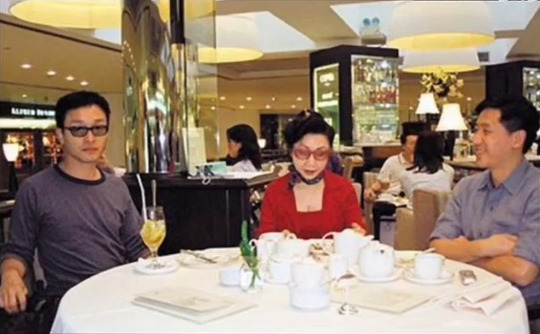
#wlw recommendations#sapphic#lgbtq#asian lgbtq#hong kong#theatre#cantonese opera#chinese opera#yam kim fai#leslie cheung#pak suet sin#yampak#yambak#pak sheut sin#bak sheut sin#hong kong queer icons#not me hastily adding tags because i keep forgetting certain ones
204 notes
·
View notes
Text
Ghost Story: a new musical is up on YouTube!
Two love stories between Chinese American and Polish American men haunt the same Montana ranch house — one century apart. As past and present intertwine, the lovers confront long-held fears in their quest to determine if they love one another for the right reasons.
youtube
GHOST STORY is a new musical exploring queer interethnic intimacies between working-class immigrants in the early Mountain West, as well as the complicated racial past of modern gay relationships. Through a story about love, culture, and identity, the show asks: In making meaning from the overwhelming tragedies of queer history, how do we balance seeking truth and beauty?
This presentation includes mature language and some mature themes. Stream our live cast album here on Spotify (and look up Ghost Story Melliot on other streaming services to find it!)
#ghost story musical#melliot#musical theater#musical theatre#new musical#musicals#queer history#lgbtq#trans#transmasc#gay#theater#theatre#aapi#chinese american#polish american#Youtube
39 notes
·
View notes
Text

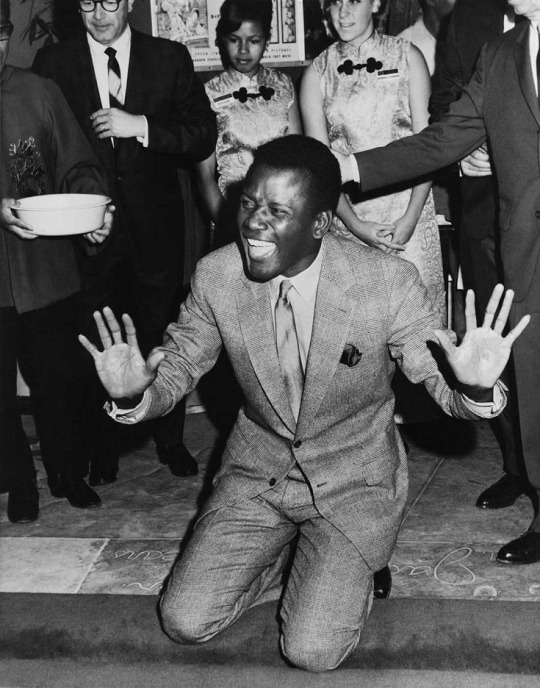
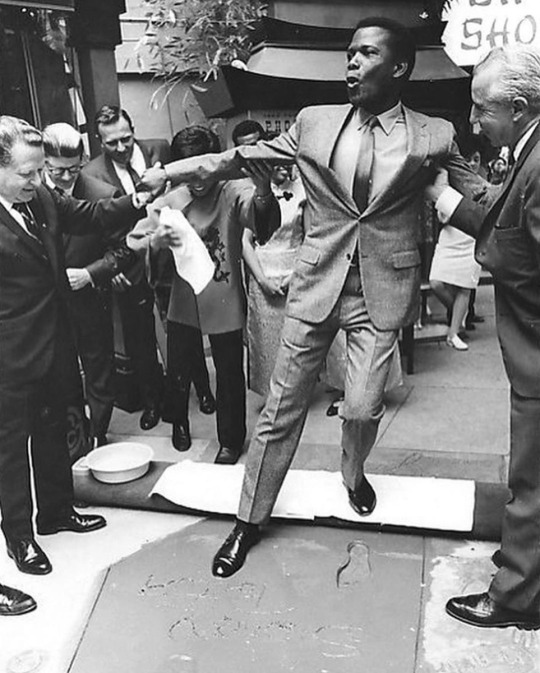
Sidney Poitier places his hands and feet in wet cement at Grauman's Chinese Theatre in Los Angeles on June 23, 1967. He was the first black actor to do so.
149 notes
·
View notes
Text
messy russian girl aesthetic looks like:
books by Bulgakov and Dostoevsky, journaling, attending theatres weekly, spending nights in jazz pubs with friends and going to chinese lectures at uni the next morning, sipping cappuccino with caramel syrup while reading poetry, hugging your friends, groupmates and colleagues when you meet









#dark academia#chaotic academia#adventure#academia#books#theatre#acting#aesthetic#actress#college life#lifestyle#bookworm#bookblr#book blog#languages#langblr#messy girl#messy moodboard#moodboard#fyodor dostoevsky#dostoevksy#dostoyevski#chinese#evelyce
27 notes
·
View notes